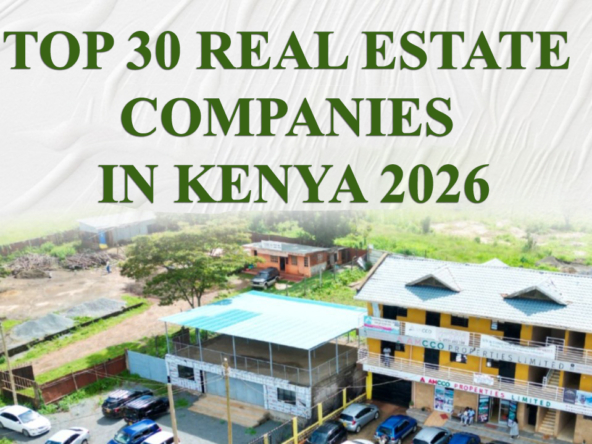Driven by pressing environmental concerns, the relentless rise in energy costs, and an accelerating global emphasis on sustainable development, Uganda’s green building movement is rapidly gaining significant ground. What was once a niche concept is now becoming a strategic imperative across the nation’s real estate sector. From the increasing integration of solar-ready homes to widespread rainwater harvesting systems and the adoption of innovative eco-materials, both developers and policymakers are increasingly prioritizing structures that not only reduce environmental footprints but also slash long-term operational expenses. This shift represents a pivotal moment for Uganda’s urban and rural landscapes, signaling a commitment to a more sustainable future.
Fuelling the Revolution: Key Market Catalysts Driving Green Building
The momentum behind Uganda’s Green Building movement is propelled by several powerful market catalysts that make sustainable practices not just environmentally responsible but also economically viable.
Energy Security & Cost Savings: A Smart Investment
One of the most compelling drivers for Uganda’s Green Building movement is the dual benefit of enhanced energy security and substantial cost savings. While grid electricity reliability currently stands at an estimated 80% uptime, commercial rates average a significant UGX 500 per kWh. In this context, investing in solar photovoltaic (PV) systems offers incredibly attractive returns, often recouping their initial installation costs within a mere 5–7 years. Beyond the payback period, solar integration provides energy independence, shielding building occupants from volatile grid tariffs and frequent power outages. This long-term operational cost reduction and enhanced energy reliability make green buildings, particularly those with integrated solar solutions, a smart and increasingly popular investment.
Regulatory Incentives: Government Pushes Green Growth
Recognizing the strategic importance of sustainable development, the Ministry of Water and Environment has actively stepped in to incentivize the Uganda Green Building sector. In 2024, they introduced a groundbreaking Green Building Dual Incentive Package. This package offers crucial financial benefits, including import duty waivers on essential PV panels and targeted tax rebates for buildings that successfully achieve certification from the Uganda Green Building Council (UGBC). These regulatory incentives directly address the initial cost premium associated with green construction, making it more financially appealing for developers and property owners to adopt sustainable practices and pursue formal green certifications.
International Pressure & Funding: Global Support for Local Green Projects
The global emphasis on climate action and sustainable development is providing significant external impetus and crucial funding for Uganda’s Green Building initiatives. Access to concessional finance from influential international institutions, such as the World Bank’s Green Climate Fund (GCF), and substantial grants through programs like USAID’s Power Africa, has enabled the launch and successful execution of key pilot projects. A prime example is the Kololo Eco-Hub, a beacon of sustainable design made possible through such international support. This influx of external funding not only provides the necessary capital for pioneering green projects but also signals global recognition of Uganda’s commitment to a sustainable future, further catalyzing the Uganda Green Building movement.
Pioneering Practices: Technologies & Methods Shaping Sustainable Construction
The growth in Uganda’s Green Building is evident in the tangible adoption of innovative technologies and construction practices that prioritize resource efficiency and environmental harmony.
Solar Integration: Bright Future for Energy Independence
The integration of solar power is rapidly becoming a hallmark of Uganda’s Green Building landscape. In 2024 alone, over 150 residential and commercial projects officially registered PV installations, demonstrating a significant uptake. This includes a mix of grid-tied systems, which supplement grid electricity, and robust off-grid hybrid systems, providing complete energy independence. Leading suppliers like Solafrique Uganda report an impressive 30% year-on-year increase in panel sales, underscoring the growing market demand for solar solutions. This widespread adoption not only reduces reliance on conventional energy sources but also contributes significantly to a lower carbon footprint for the nation’s built environment.
Water Conservation: Smart Management of a Precious Resource
In an effort to bolster water security and reduce strain on municipal supplies, developers in Uganda’s Green Building movement are increasingly incorporating advanced water conservation techniques. A prominent practice is the integration of large-capacity rainwater harvesting tanks, often ranging from 10,000 to 20,000 liters per residential or commercial unit. These systems are frequently supplemented by strategically drilled boreholes, providing alternative water sources. By capturing and utilizing rainwater and groundwater, these developments significantly reduce their dependency on the National Water and Sewerage Corporation (NWSC) supply, leading to long-term cost savings and greater water resilience for occupants.
Eco-Materials & Passive Design: Building with Nature
A core tenet of Uganda’s Green Building philosophy involves the strategic use of eco-materials and intelligent passive design principles. This includes the widespread adoption of stabilized compressed earth blocks (SCEB), a sustainable and locally sourced building material that requires less energy to produce than conventional bricks. The utilization of local timber, responsibly sourced, further reduces embodied energy and supports local economies. Moreover, passive ventilation designs are intelligently integrated into structures, enhancing indoor comfort by maximizing natural airflow and minimizing the need for active cooling systems like air conditioning. These approaches not only lower the carbon footprint of construction but also lead to more comfortable and energy-efficient living and working spaces.
Tackling the Hurdles: Challenges & Barriers to Widespread Adoption
Despite the clear benefits, Uganda’s Green Building movement faces significant challenges that need to be addressed for broader adoption.
Upfront Cost Premiums: A Financial Barrier
One of the most persistent barriers to widespread adoption of Uganda’s Green Building practices is the upfront cost premium. Green-certified buildings typically carry a 10–15% higher initial construction cost compared to conventional structures. This higher upfront investment can be a significant deterrent for price-sensitive buyers in a market where the average per capita monthly income is approximately UGX 350,000. While green buildings offer long-term operational savings, the initial financial hurdle can be difficult for many to overcome, necessitating innovative financing solutions and increased awareness of long-term value.
Skill Gaps: Bridging the Expertise Divide
The relative newness of the Uganda Green Building movement means there are significant skill gaps within the local construction industry. Limited local expertise in specialized green construction techniques, sustainable design principles, and green material application often necessitates the engagement of international consultants. While these experts bring invaluable knowledge, their involvement inevitably inflates overall project costs, making green projects less competitive against conventional builds. Investing in local capacity building and specialized training programs is crucial for fostering an indigenous green building workforce and reducing reliance on costly foreign expertise.
Certification Awareness: Demystifying Green Standards
Despite the existence of the Uganda Green Building Council (UGBC) and its certification system, awareness remains a significant challenge. A considerable number of developers, an estimated only 25%, actively pursue UGBC certification. This low uptake is primarily due to a perceived complexity of the certification process and a general unfamiliarity with the rating system and its benefits. Without broader awareness and simpler, more accessible certification pathways, the full impact of formal green building standards on the Uganda Green Building market will remain constrained. Educating developers on the long-term value and process simplicity is vital.
Private Sector Driving Innovation: Initiatives for Growth
The private sector, often in collaboration with public bodies, is playing a crucial role in overcoming challenges and accelerating the Uganda Green Building movement through various innovative initiatives.
Capacity Building: Nurturing Local Talent
Recognizing the critical skill gaps, the Uganda Green Building Council (UGBC), in a proactive partnership with Makerere University’s prestigious Department of Architecture, launched targeted training programs in 2024. These programs are specifically designed to upskill local professionals in cutting-edge green design principles and the intricacies of certification processes. The ambitious goal is to train 200 local professionals, creating a robust pool of indigenous expertise. This crucial capacity building is fundamental to reducing reliance on international consultants and making sustainable construction more accessible and affordable within Uganda’s Green Building sector.
Financing Mechanisms: Unlocking Green Investment
Innovative financing mechanisms are emerging to bridge the upfront cost premium. GreenFund Bank, for instance, has introduced specialized “Eco-loan” products, demonstrating a commitment to fostering sustainable development. These loans offer attractive terms, providing up to 70% financing for green upgrades and new builds, with competitive 12% interest rates over 10-year tenors. By making green financing more accessible and affordable, these products directly incentivize both retrofits of existing buildings and the construction of new green structures, propelling the growth of Uganda’s Green Building market and making sustainability a more financially viable option for a wider range of investors.
Pilot Green Communities: Demonstrating Holistic Sustainability
Visionary projects like the EcoCity Estates in Kira are serving as powerful demonstrations of holistic sustainability within Uganda’s Green Building movement. These pilot green communities integrate a comprehensive suite of sustainable features, including localized solar microgrids for energy independence, communal waste recycling centers to manage resources efficiently, and even permaculture gardens to promote local food production and green spaces. By showcasing fully integrated sustainable living environments, these projects provide tangible proof of concept, inspiring broader adoption and demonstrating the multifaceted benefits of embracing a comprehensive green approach to urban development.
Strategic Investor Implications: Maximizing Returns & Impact
For investors, the nascent yet rapidly growing Uganda Green Building sector presents unique opportunities for both financial returns and positive environmental and social impact.
Long-Term Savings & ESG Appeal: Sustainable Profitability
Investing in green projects offers significant long-term financial benefits. Developers and property owners can realize operational cost reductions of 20–30% due to lower energy consumption, reduced water bills, and minimized maintenance. Beyond these direct savings, green buildings inherently align with Environmental, Social, and Governance (ESG) criteria. This alignment is increasingly crucial for attracting international institutional funding, as a growing number of global investors prioritize sustainable portfolios. Thus, Uganda Green Building investments not only promise direct profitability but also open doors to a broader pool of capital.
Market Differentiation: Commanding a Premium
Early adopters in the Uganda Green Building movement stand to gain substantial reputational advantages and can effectively differentiate their offerings in a competitive market. As demand for sustainable and eco-friendly living spaces grows, certified green buildings can command premium pricing, potentially up to 12% higher than comparable conventional developments. This premium reflects the added value of lower operational costs, enhanced comfort, and the positive environmental impact, making green properties highly desirable and profitable. This early-mover advantage allows developers to establish leadership and capture a discerning market segment.
Potential Policy Windfall: Unlocking New Revenue Streams
The future of Uganda’s Green Building market holds exciting prospects for additional revenue streams. Proposed carbon credit schemes, being developed under Uganda’s Nationally Determined Contributions (NDC) to the Paris Agreement, could unlock supplementary financial benefits for certified green buildings. By demonstrating verifiable reductions in carbon emissions, these buildings could qualify for carbon credits, which can then be traded on international markets. This potential policy windfall offers a compelling financial incentive, further enhancing the attractiveness and profitability of investing in sustainable construction within Uganda.
Conclusion: A Green Future for Uganda’s Real Estate
The Uganda Green Building movement is undeniably gaining substantial ground, transforming environmental concerns into tangible opportunities for innovation and sustainable development. While challenges related to upfront costs, skill gaps, and certification awareness persist, the proactive initiatives from both the private sector and government are systematically addressing these barriers. With growing energy cost pressures, strong regulatory incentives, and increasing international support, the trajectory for green buildings in Uganda is clear and upward. As more developers embrace eco-friendly practices and the market matures, Uganda’s Green Building sector is poised to deliver not only significant economic returns but also a lasting legacy of environmentally responsible and resilient infrastructure for generations to come.




